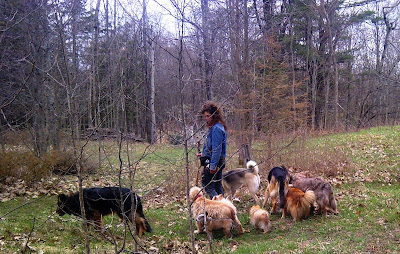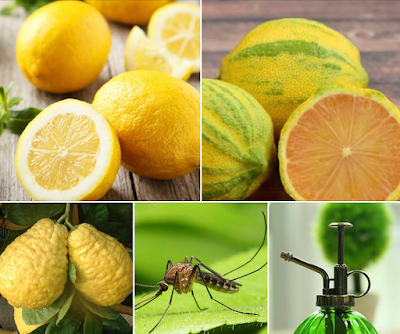Is This Toxic Food Additive in Your Dog and Cat's Food, Chelated Minerals Are Not Good for Your Dog and Cat
In this article:
- Chelated Minerals Are Not Appropriate for Dogs and Cats
- Natural Trace Minerals vs. Toxic Heavy Metals
- Trace Minerals from Raw and Fresh Food
- Trace Mineral Loss in Highly Processed Pet Food
- Chelated Minerals Cause Health Issues
- Industrial Trace Minerals Cause Health Issues
- Pet Food Products That Contain Chelated Minerals and Inorganic Minerals
- Read Your Pet's Food, Treat and Supplement Ingredient List
1. Chelated Minerals Are Not Appropriate for Dogs and Cats
Chelated minerals are a common ingredient in pet food, treats and supplements. Chelated minerals are not species appropriate and aren’t good for dogs and cats.
In 2012, the NCBI reported on a study assessing
levels of heavy metals in the liver and kidneys of dogs from an urban
environment. Pet food was confirmed as a source of heavy metal contaminants
(e.g. cadmium, lead, and mercury), as was environmental pollution.
Another NCBI report
states:
“…food can affect health not only be their nutrient content and the amount consumed, but also by non-nutritive components, such as pesticides, fertilizers, preservatives, heavy metals and microbiological components”
2. Natural Trace Minerals vs. Toxic Heavy Metals
Natural trace minerals are essential trace minerals that are present in
low concentrations to sustain life. These minerals (e.g. copper, iodine, iron,
manganese, selenium, and zinc), are present in whole fresh foods.
When soil
health is good, trace mineral content in fresh foods is optimal. When soils
are depleted, (typically from use of conventional fertilizers), trace
mineral content in plants are less than optimal. This is one reason why food
grown following organic farming practices is nutritionally superior to conventional
non-GMO, and GMO farming practices.
Our dogs and cats require trace minerals to
maintain health. In the past tens of thousands of years,
dogs and cats obtained essential trace minerals from their natural
diet of raw, fresh whole foods.
Non-organic (industrially produced) trace minerals were introduced to the
canine and feline diet when highly processed pet food became popular. Which by
the way, also coincides with the escalation of serious health issues
(inflammatory, chronic disease, including cancer), and the foreshortened life
spans we see in today’s dogs and cats. Industrial trace minerals are NOT the
same as trace minerals naturally obtained from fresh whole foods.
3. Trace Minerals From Raw and Fresh Food
Dogs and cats naturally obtain required levels of essential
trace minerals from consuming a species appropriate, raw food (or minimally cooked) diet. A species appropriate diet includes raw animal protein, raw non-load bearing bones, healthy fats, and plant materials.
For example:
Raw animal protein (muscle meat and organ meat) is an
excellent source of iron, selenium and zinc.
Spinach also provides selenium and
zinc.
Raw pumpkin seeds, pineapple and spinach are rich in manganese (and other
essential trace minerals).
Raw liver is a good source of copper.
Food sourced
from pasture-raised, grass feed, organic, or wild-crafted sources provides the
best trace mineral profile.
Conventional and (worse) GMO farming methods result in loss of trace
minerals in food.
4. Trace Mineral Loss in Highly Processed Pet Food
Dry pet food, and canned (wet) pet food is a ‘highly processed’
product. Ingredients undergo a series of complex processing steps, which
include high heat cooking.
Trace mineral loss occurs when whole food ingredients are cooked at high
temperatures. The typical range of trace mineral loss from high heat cooking is
30% to 40%.
Additional trace mineral loss can occur due to one, or a
combination of the following:
Meat, bones and fat that are trace mineral deficient, and may also be contaminated with toxic heavy metals (i.e. arsenic, mercury and lead). Factory farm animal's bones are high in lead.
Condemned, denatured meat, bones and fat are used as an ingredient in many pet food products. Condemned denatured meat, bones and fat are trace mineral deficient.
Fruit and vegetables grown in soil treated with conventional fertilizers, results in a mineral deficient plant.
The end result is a product that is at minimum 40% trace
mineral deficient.
To ‘make-up’ for the loss of trace minerals, the pet food
industry adds industrial trace minerals, called chelated minerals.
- Approximately 70% of these minerals come from China.
- Chinese-sourced minerals can be tainted with other heavy metals, e.g. non-organic arsenic, cadmium, lead, mercury, nickel and strontium from environmental pollution.
5. Industrial Trace Minerals Cause Health Issues
Industrial trace minerals fall into two basic categories – inorganic,
and organic. Inorganic trace minerals and organic trace minerals are mined using
the same methods – extraction from rock.
These minerals:
- Aren't readily absorbed by the body
- Are difficult for the body to excrete.
Natural trace minerals from whole foods are highly bioavailable to the body,
Industrial minerals burden the body’s eliminatory system. Minerals that the body cannot eliminate are stored
in the body’s organs. Eventually this can lead to a range of health issues.
For example:
- Anemia
- Digestive issues
- Fatigue
- Inflammation
- Oxidization
- Poor immune system response
- Increased risk of urinary tract infections
- Organ fatigue
- Toxicity, and at worst death. Insufficient mineral intake can also cause a multitude of health issues, and at worst death.
6. Chelated Minerals
Organic? Synthetic.
First, we need to define the word ’organic’ in context of industrial
trace minerals. The term ‘organic’ when used in this context indicates the
presence of carbon - it does NOT mean organic as in organic farming. The
chelated minerals used in pet food are not an 'organic food additive', that ARE
a synthetic food additive.
Extraction From Rock and Binding
The first step in making chelated minerals involves industrial
mining of rock, from which the minerals are then extracted. After extraction,
the inorganic minerals are bound to a carbon-based substance using a
synthetic-chemical process. Binding the inorganic mineral to a carbon-based
substance increases the bioavailability of the mineral. When the binding
process is complete, the trace mineral is said to be ‘organic’. Any remaining unbound
particulate is removed. The resulting substance is then dried and ground to a
powder.
Chelating Agents
Now we need to quickly talk about chelating agents. Chelating
agents used in the manufacture of chelated trace minerals are natural or
synthetic-chemical amino acids, e.g. cysteine, l-cysteine and glycine, or
partially hydrolyzed proteins. Hydrolyzed proteins are obtained by intense
processing in which the animal proteins (i.e. from factory farm raised animals),
or plant proteins (i.e. GMO soy), or synthetic proteins are treated with caustic
denaturing agents to separate the amino acids from proteins. The caustic,
denaturants used are, for example - hydrochloric acid, sodium hydroxide, and hexane
(a solvent made from crude oil).
7. Pet Food Products That Contain Chelated Minerals, and Inorganic
Minerals
.1 Dry Highly Processed Pet Food (Kibble)
all kibble contains chelated
minerals, including:
.2 Canned and Wet Pet food
- Premium dry food diets
- Veterinary prescription dry ‘food’ diets
- Grocery store and tractor supply store kibble
.2 Canned and Wet Pet food
most canned and wet pet food contain chelated
minerals
.3 Air Dried, Dehydrated and Freeze Dried Pet Food
- Premium
- Veterinary prescription
- Grocery store and tractor supply
.3 Air Dried, Dehydrated and Freeze Dried Pet Food
most include chelated
minerals
.4 Raw Pet Food Premades
some include chelated
minerals
Chelated or inorganic minerals in
raw pet food products:
- Indicate a problem with the whole food ingredients used in the product.
- A truly good quality raw food does NOT contain chelated minerals.
8. Read Your Pet's Food, Treat and Supplement Ingredient List
If you're using products that contain chelated
minerals, your dog and cat’s system is working over-time to excrete
the excess, chelated minerals for her body.
- Copper amino acid chelate
- Copper gluconate
- Copper proteinate
- Manganese gluconate
- Manganese proteinate
- etc.
- Calcium carbonate
- Copper sulfate (copper sulphate)
- Copper carbonate
- Sodium borate
- Zinc oxide
Chelated minerals are industrially mined heavy metals, pulverized,
and bound to synthetic amino acids and proteins that have been processed with
toxic chemicals resulting in a partially bioavailable trace mineral. I consider
chelated minerals to be a source of toxins.
The high rate of inflammatory and chronic disease,
premature aging, renal failure, cancer, etc. seen in today’s companion animal
population is not ‘natural' - it is a man-made epidemic.
Dogs and cats are, casualties of the greedy pet food
industry, and the unethical individuals behind the industry.
For the love of dogs and cats, pass it on.
Holistic Diet, Nutrition, Wellness Services Tailored to Your Individual Dog and Cat
For information about my holistic diet, nutrition, wellness services visit my:
Maintain good health | Address acute and chronic health issues | Pre and post surgery support and recovery
My holistic wellness services are available worldwide via video consultation.
🌎 USA | Canada | UK | Europe | Australia | New Zealand | Asia | South and Central America | Africa | UAE
📱 FaceTime | Facebook | Skype | WhatsApp
Holistic Behavioral Services For Your Dog
For information about my holistic behavioral services visit my:
For dogs of all ages, sizes and breeds
My holistic behavioral services are available locally in-person and worldwide via video session.
🌎 USA | Canada | UK | Europe | Australia | New Zealand | Asia | South and Central America | Africa | UAE
📱 FaceTime | Facebook | Skype | WhatsApp
Affiliations to Companies
✓ None.
✓ I don't sell food or supplements.
✓ I'm not aligned with any companies.
✓ None.
✓ I don't sell food or supplements.
✓ I'm not aligned with any companies.
Article and graphics by Karen Rosenfeld



















